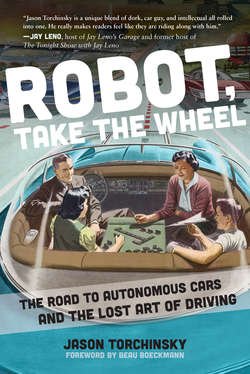Читать книгу Robot, Take the Wheel - Jason Torchinsky - Страница 17
На сайте Литреса книга снята с продажи.
World War II: Project Pigeon
ОглавлениеThe desire to have an autonomous system that could not just react to basic input about the environment—like speed and heading—but could actually sense, track, follow, or aim at a particular target, has been around since long before we had the means to produce machines capable of such tasks. That’s why things like Project Pigeon came into existence; sometimes, we didn’t want to wait around until we developed such machines, and instead borrowed the equipment we needed from nature. Even if that equipment was pigeons.
An autonomous vehicle that can track an object and make turns or otherwise modify its course to track an object is, naturally, highly useful in warfare, where so much is concerned with sending moving things along very fast to chase down and slam into other moving things. To pull this off, you need some sort of visual tracking and processing system, which pigeons already have.
The famous behaviorist B. F. Skinner realized this, and during World War II employed specially trained pigeons to steer a missile at his intended target. Skinner developed a nose cone for a missile that contained three windows, each one with a pigeon looking out of it. These pigeons had been trained via operant conditioning9 (basically, rewarded when a desired behavior was performed and punished when not) to peck at a target seen through the window. By pecking on the window that contained the target, the pigeon actuated controls that allowed the missile to adjust its course and keep the target centered.
The system was said to have performed well in simulations but Skinner complained that no one would take him seriously.10 There’s a lot of reluctance for people to entrust weapons of war to pigeons, a prejudice that still holds even to this day.
